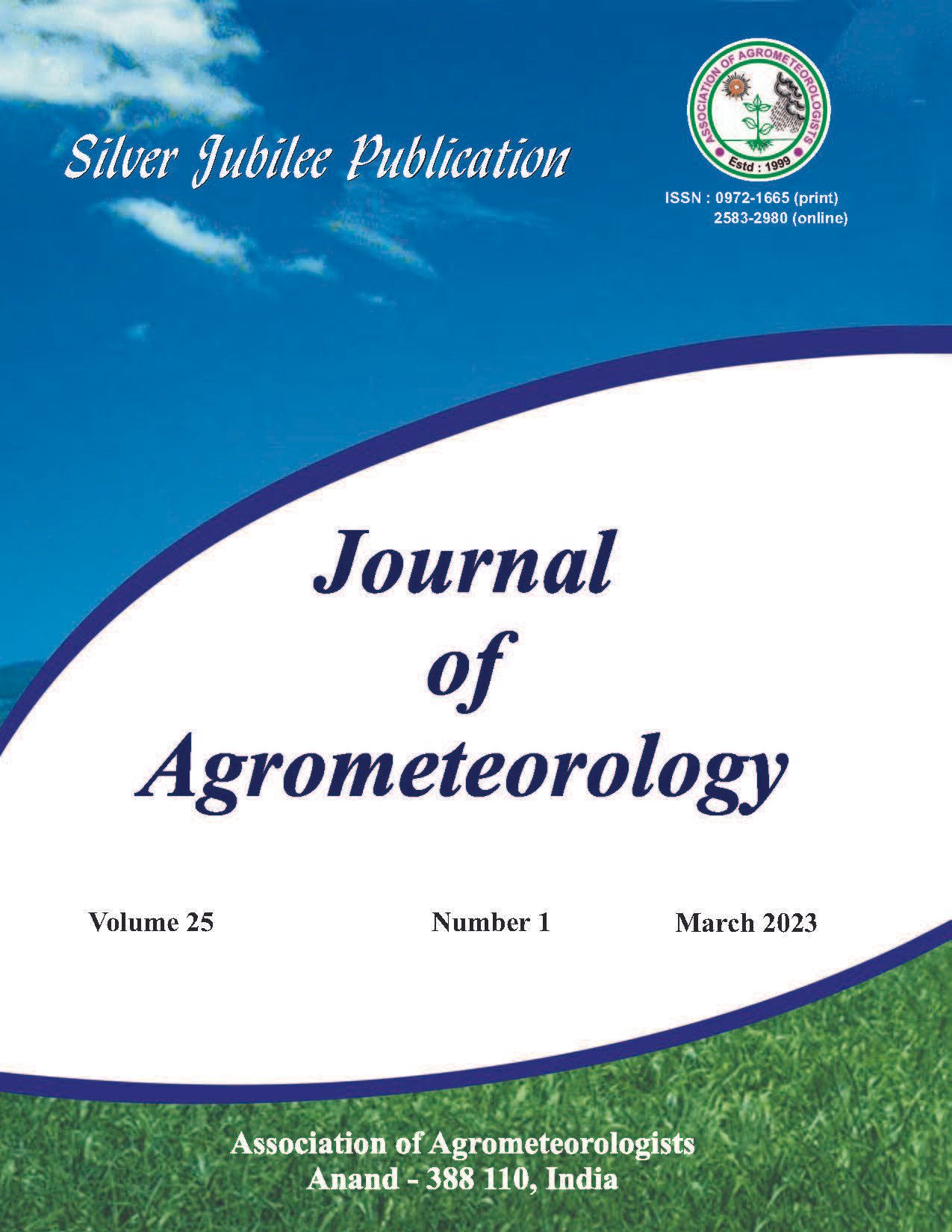Revisiting statistical spectral-agrometeorological wheat yield models for Punjab using MODIS EVI and NCMRWF re-analysis temperature data
DOI:
https://doi.org/10.54386/jam.v25i1.2067Keywords:
Spectral-agromet models, Wheat yield, MODIS EVI, Nighttime temperatureAbstract
Use of space-based spectral information with weather inputs for wheat yield modeling by empirical and crop simulation models is reviewed and extended with enhanced spectral modeling approach for districts in central Punjab. The study uses multi-date and multi-year MODIS data at 250m resolution to both identify wheat crop and develop temporal spectral Enhanced Vegetation Index (EVI) profile for 2001-2019 period. Recently developed high resolution (12km) gridded temperature data from NCMRWF, namely India Monsoon Data Assimilation and Analysis (IMDAA) has been used for computing district-level average of daily (AV) and night-time (NT) temperatures. Multiple linear regression analysis with statistical tests on significance of coefficients for various inputs is used to investigate significance of various input parameters in yield models on multi-district data set. Results identify both area under spectral profile (AS-EVI) and mean peak value (PK-EVI) have significant control on yield. Individual district-level trend based yield (YT) is a significant coefficient in the multi-district models. Model performance is significantly improved by the inclusion of phase-specific temperatures and at specific post-flowering phases the night temperature figured in best models. Significance of the results in development of spatially resolved yields for applications like yield forecast, crop insurance and climate change studies is discussed.
Downloads
Published
How to Cite
Issue
Section
License
Copyright (c) 2023 V. K. DADHWAL, YAMINI BHAT

This work is licensed under a Creative Commons Attribution-NonCommercial-ShareAlike 4.0 International License.
This is a human-readable summary of (and not a substitute for) the license. Disclaimer.
You are free to:
Share — copy and redistribute the material in any medium or format
Adapt — remix, transform, and build upon the material
The licensor cannot revoke these freedoms as long as you follow the license terms.
Under the following terms:
Attribution — You must give appropriate credit, provide a link to the license, and indicate if changes were made. You may do so in any reasonable manner, but not in any way that suggests the licensor endorses you or your use.
NonCommercial — You may not use the material for commercial purposes.
ShareAlike — If you remix, transform, or build upon the material, you must distribute your contributions under the same license as the original.
No additional restrictions — You may not apply legal terms or technological measures that legally restrict others from doing anything the license permits.
Notices:
You do not have to comply with the license for elements of the material in the public domain or where your use is permitted by an applicable exception or limitation.
No warranties are given. The license may not give you all of the permissions necessary for your intended use. For example, other rights such as publicity, privacy, or moral rights may limit how you use the material.





